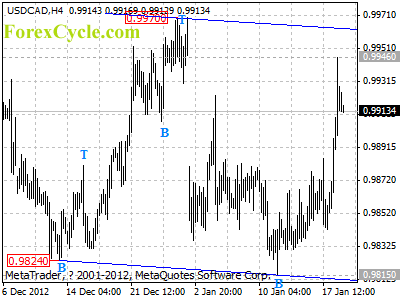London Gold Market Report
from Ben Traynor
BullionVault
Friday 18 January 2013, 08:00 EST
SPOT MARKET gold prices hovered around $1690 an ounce Friday morning in London, having touched a one-month high in earlier Asian trading, while European stock markets opened slightly higher after gains in Asia, following the release of the latest economic growth figures from China.
“[Gold] support is at $1625, the January 4 low,” say technical analysts at bullion bank Scotia Mocatta.
“We are neutral until we see a clear break of $1694.”
Heading into the weekend, gold was up 1.6% for the week by Friday lunchtime in London.
Silver meantime also touched a one-month high this morning, before easing back to $31.72 an ounce, a 4% weekly gain.
“It can only be a question of time before buoyant [exchange traded fund] demand causes the silver price to rise,” say commodities analysts at Commerzbank, noting that yesterday saw the largest inflows into silver ETFs since December 2010, taking total ETF holdings to a new record of nearly 20,000 tonnes.
“Gold ETFs, by contrast, have recorded outflows of 16 tonnes since the start of the year,” Commerzbank adds, “which points to reduced interest in gold.”
“We are still in a period of trial, trying to rebuild the confidence into the gold market,” says Ole Hansen, head of commodity strategy at Saxo Bank.
“While we still stay above the 200-day moving average around $1662, there is a lot of nervousness in the market.”
“Momentum matters a lot in the gold market, and its absence is a major reason for a rising sense of unease,” adds a note from Australian investment bank Macquarie.
“On 27 March 2013, assuming gold does not spike higher in the meantime, 406 trading days will have passed since gold hit its record (nominal) high of $1921 an ounce in September 2011. That will mark gold’s longest period without setting a new all-time price high since it exceeded its (infamous) $850 an ounce 1980 high in January 2008.”
The Macquarie analysts add however that if the US Federal Reserve continues its current policy of buying $85 billion a month asset purchases to the end of the year, and gold’s historical relationship with quantitative easing remains, “the by the end of 2013 gold should be well over $2000 an ounce”.
The US Mint meantime has suspended sales of its 2013 silver American Eagle bullion coin, produced specifically for investment purposes, as it has run out of stock. Just over six million ounces of silver American Eagles have been sold so far this month, close to the amount sold over the whole of January 2012, last year’s biggest month.
“There is always a big boom in the new year when the new issue comes out, and you will see a drop in the next month,” BullionVault’s Miguel Perez-Santalla told newswire Reuters earlier this week.
China’s economy grew at 7.8% over the course of 2012, the slowest rate since 1999, official data published Friday show. Fourth quarter growth however was 7.9% year-on-year, up from 7.4% in Q3 and following seven quarters of slower growth.
“Overall the economy has been stabilizing,” says a statement from China’s national statistics bureau.
In September last year, China’s government announced 1 trillion Yuan of new infrastructure projects.
“[Friday’s data release] reinforces our view that the growth recovery is on track,” says Zhiwei Zhang, chief economist China at Nomura.
“As growth recovers and inflation rises, the likelihood of cuts to the reserve requirement ratio or to interest rates declines. We expect authorities to focus more on controlling the risks from inflation and shadow banking.”
The Bank of Japan meantime will consider open-ended asset purchases and has agreed to a new inflation target of 2%, double the rate currently targeted, Reuters reports, citing “sources familiar with the BoJ’s thinking”.
Gold imports to India, traditionally the world’s biggest gold buying country, could fall by a quarter if the government raises import duties from 4% to 6%, according to Bachhraj Bamalwa, chairman of the All India Gems & Jewellery Federation.
Ben Traynor
BullionVault
Gold value calculator | Buy gold online at live prices
Editor of Gold News, the analysis and investment research site from world-leading gold ownership service BullionVault, Ben Traynor was formerly editor of the Fleet Street Letter, the UK’s longest-running investment letter. A Cambridge economics graduate, he is a professional writer and editor with a specialist interest in monetary economics. Ben writes and presents BullionVault’s weekly gold market summary on YouTube and can be found on Google+
(c) BullionVault 2013
Please Note: This article is to inform your thinking, not lead it. Only you can decide the best place for your money, and any decision you make will put your money at risk. Information or data included here may have already been overtaken by events – and must be verified elsewhere – should you choose to act on it.








